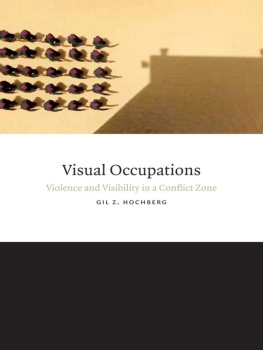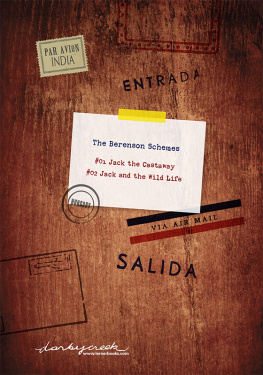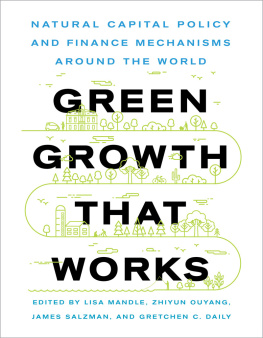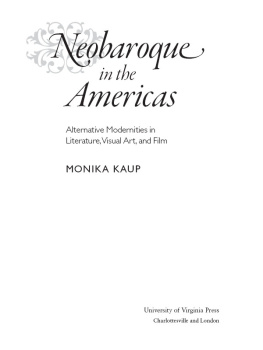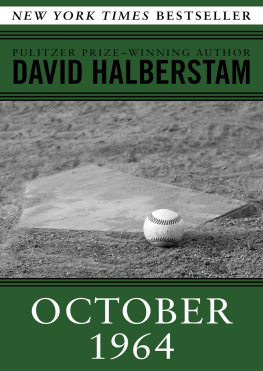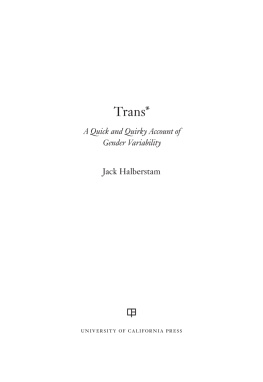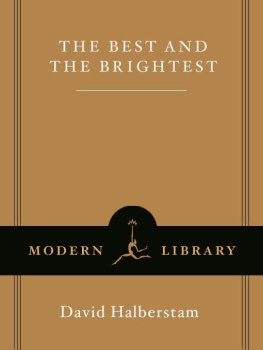Gil Z. Hochberg - Visual Occupations (Perverse Modernities: A Series Edited by Jack Halberstam and Lisa Lowe)
Here you can read online Gil Z. Hochberg - Visual Occupations (Perverse Modernities: A Series Edited by Jack Halberstam and Lisa Lowe) full text of the book (entire story) in english for free. Download pdf and epub, get meaning, cover and reviews about this ebook. year: 2015, publisher: Duke University Press, genre: Romance novel. Description of the work, (preface) as well as reviews are available. Best literature library LitArk.com created for fans of good reading and offers a wide selection of genres:
Romance novel
Science fiction
Adventure
Detective
Science
History
Home and family
Prose
Art
Politics
Computer
Non-fiction
Religion
Business
Children
Humor
Choose a favorite category and find really read worthwhile books. Enjoy immersion in the world of imagination, feel the emotions of the characters or learn something new for yourself, make an fascinating discovery.
- Book:Visual Occupations (Perverse Modernities: A Series Edited by Jack Halberstam and Lisa Lowe)
- Author:
- Publisher:Duke University Press
- Genre:
- Year:2015
- Rating:4 / 5
- Favourites:Add to favourites
- Your mark:
- 80
- 1
- 2
- 3
- 4
- 5
Visual Occupations (Perverse Modernities: A Series Edited by Jack Halberstam and Lisa Lowe): summary, description and annotation
We offer to read an annotation, description, summary or preface (depends on what the author of the book "Visual Occupations (Perverse Modernities: A Series Edited by Jack Halberstam and Lisa Lowe)" wrote himself). If you haven't found the necessary information about the book — write in the comments, we will try to find it.
Gil Z. Hochberg: author's other books
Who wrote Visual Occupations (Perverse Modernities: A Series Edited by Jack Halberstam and Lisa Lowe)? Find out the surname, the name of the author of the book and a list of all author's works by series.
Visual Occupations (Perverse Modernities: A Series Edited by Jack Halberstam and Lisa Lowe) — read online for free the complete book (whole text) full work
Below is the text of the book, divided by pages. System saving the place of the last page read, allows you to conveniently read the book "Visual Occupations (Perverse Modernities: A Series Edited by Jack Halberstam and Lisa Lowe)" online for free, without having to search again every time where you left off. Put a bookmark, and you can go to the page where you finished reading at any time.
Font size:
Interval:
Bookmark:
Perverse Modernities | A Series Edited by Jack Halberstam and Lisa Lowe
Violence and Visibility in a Conflict Zone
Gil Z. Hochberg
DUKE UNIVERSITY PRESS
Durham and London
2015
2015 Duke University Press
All rights reserved
Printed in the United States
of America on acid-free paper 
Typeset in Quadraat and Quadraat Sans
by Tseng Information Systems, Inc.
Library of Congress Cataloging-in-Publication Data
Hochberg, Gil Z., 1969
Visual occupations : violence and visibility in a conflict zone / Gil Z. Hochberg.
pages cm(Perverse modernities)
Includes bibliographical references and index.
ISBN 978-0-8223-5901-2 (hardcover : alk. paper)
ISBN 978-0-8223-5887-9 (pbk. : alk. paper)
ISBN 978-0-8223-7551-7 (e-book)
1. Visual communicationPolitical aspectsPalestine. 2. Arab-Israeli conflictMass media and the conflict. 3. Middle EastIn mass media. 4. PalestineIn motion pictures. 5. Art and photographyPolitical aspectsPalestine. 6. Military surveillance. 7. Zionism. I. Title.
II. Series: Perverse modernities.
P95.82.P19H634 2015
302.2095694dc23
2014041992
Cover art: Khaled Jarrar, I. Soldier. 45 187 cm. Courtesy of the artist.
To the memory my father, Yosef Hochberg | October 14, 1945April 29, 2013
Like all creations, this book is an outcome of a collegial effort. Many friends, students, family members, and colleagues have accompanied me throughout the extended period of researching and writing this book, providing me with invaluable support. I am deeply grateful to Shukri Abed, Paul Amar, Amal Amireh, Ariella Azoulay, S. A. Bachman, Ella Shohat, Rebecca Stein, Nadia Yaqub, and, last but not least, Simon Faulkner, for the many stimulating conversations I have had with each of them about vision, politics, and art and for a long-lasting intellectual dialogue.
This project would have never come to life without the inspiration I found in the work of numerous artists and political activists. I have had the fortune of forming special friendships and benefiting from the remarkably inspiring artistic and political work of Basel Abbas, Ruanne Abou-Rahme, Udi Aloni, Yael Bartana, Rula Halawani, Khaled Jarrar, Ilana Salama Ortar, Larissa Sansour, Miri Segal, and Sharif Waked. I thank all these outstanding artists for sharing their creative inner world with me.
For reading and commenting on several different sections of this book, I extend my gratitude to the wonderful members of the UCLA faculty writing group, which met regularly in 2012: Christine Chism, Elizabeth DeLoughrey, Helen Deutsch, Rachel Lee, Francoise Lionnet, Kathleen McHugh, and Shu-mei Shih. Our conversations and exchange of writings remains one of the most constructive experiences I have had.
At UCLA I continue to benefit from an enriching intellectual environment. I thank my friends at the Comparative Literature department and the Gender Studies department for their collegiality. I would like to extend my innermost appreciation to Ali Behdad, Michael Cooperson, Nouri Gana, Sondra Hale, Abeer Mohammed, Aamir Mufti, Todd Presner, and DavidSchanberg for their continual support and friendship, and to express my deepest gratitude to Efrain Kristal: as the chair of my home department, Comparative Literature, he has offered me his relentless support not only as an academic mentor but also as a motivating figure at the UCLA gym.
Other close friends have followed the project from early on, offering their support and encouragement in so many ways. I am immensely thankful to PP for accompanying me through the many phases of the journey. I thank Tamar Assal, Ayelet Ben-Yishai, Mel Y. Chen, Eliane Fersan, Sarah Gualtieri, Macarena Gomez-Barris, Maria-Elena Martinez, Chana Kronfeld, Anna More, Yonit Efron, and Naomi Kanuik for meaningful friendships that nourish both mind and soul. My heartfelt appreciation goes to my dear friend Jack Halbertstam, who has read the manuscript more than once, offering me priceless remarks along with confirming reassurance at times I needed it most.
Special thanks are also extended to my students from the graduate seminar on visual culture (2011). Many of the ideas in this book crystalized as an outcome of the conversations we held in this seminar. To Hoda El Shakry, Ethan Pack, Shir Alon, and Simchi Cohen, my graduate students past and present, I owe a great debt. Their dedicated research assistance has proven vital to the completion of this manuscript.
At Duke University Press I was met with the most wonderful group of individuals. I am deeply obliged to Ken Wissoker, who has followed this project from very early on, offering me his generous support and encouragement throughout. I am also thankful to Kathleen Kageff for her careful copyediting and generosity, for Jade Brook for her assistance in every stage of production, and to the two anonymous readers, who have read more than one draft of this manuscript. Their constructive comments and insightful suggestions have played a crucial role in bringing the book to its final form.
Colleen Jankovic came on board in 2014. Her dedication to this project has been very meaningful to me. I am profoundly thankful for her careful reading of the manuscript and for her editorial help, in additional to her guidance with formatting, image capturing, image improving, and much more.
The last words of thankfulness are reserved for my family: I thank my mother, Ruth Ramot, for believing in the project and serving as my main advocate. I thank my two wonderful brothers, Daniel Tsur and Itamar Tsur,for enduring my (often) unrestrained chattering about the past, present, and future of the Israeli-Palestinian conflict. I thank my stepfather, Yaron Tsur, for asking me the kind of questions historians ask and encouraging me to frame my arguments historically.
Finally, and as always, my deepest gratitude is offered to my partner, Keri J. Kanetsky (who has read and reread all-too-many drafts over the years), and our two beautiful children, Ella and Omri Kanetsky. The love the three of you share with me is the meaning of it all.
Visual Politics in a Conflict Zone
Vision is always a question of the power to seeand perhaps of the violence implicit in our visualizing practices. With whose blood were my eyes crafted?
Donna Haraway, Situated Knowledge: The Science Question in Feminism and the Privilege of Partial Knowledge
In 2008, DAAR (Decolonizing Architecture Art Residency), a collective based in Beit Sahour, Palestine, launched one of its simplest yet most spectacular projects of decolonizing architecture.).
This simple act of projection not only changed the original use of the water tower by turning it into a flat screen, but it also resulted in a spectator image that literally subverted the direction of the gaze and replaced the military gaze with another kind of gaze. Staging the projector so that the screen was located at the summitthe place has served as an Israeli army).
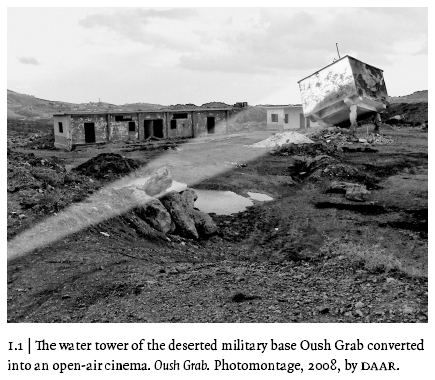
The possibility of redirecting the gaze or manipulating visions of control in order to create new ways of seeing is of course rarely so easily achieved, nor does it normally take such a literal form. Even in this example, we must remember that the direct artistic intervention was attainable mainly thanks to the fact that the military base was fully evacuated at the time. I open this book with this example precisely because I want to emphasize that undoing visions of violence, or creating new perspectives and new modes of looking, is never a simple task. As the various examples discussed throughout the book demonstrate, it is a long and bumpy process to reshape a visualfield that dominates and sustains a conflict of the magnitude we are discussing here. This process involves not just tactical, physical interventions into the landscape, but also the manipulation of visual positions, new settings for spectatorship, new modes of appearance, and at times new modes of
Font size:
Interval:
Bookmark:
Similar books «Visual Occupations (Perverse Modernities: A Series Edited by Jack Halberstam and Lisa Lowe)»
Look at similar books to Visual Occupations (Perverse Modernities: A Series Edited by Jack Halberstam and Lisa Lowe). We have selected literature similar in name and meaning in the hope of providing readers with more options to find new, interesting, not yet read works.
Discussion, reviews of the book Visual Occupations (Perverse Modernities: A Series Edited by Jack Halberstam and Lisa Lowe) and just readers' own opinions. Leave your comments, write what you think about the work, its meaning or the main characters. Specify what exactly you liked and what you didn't like, and why you think so.

